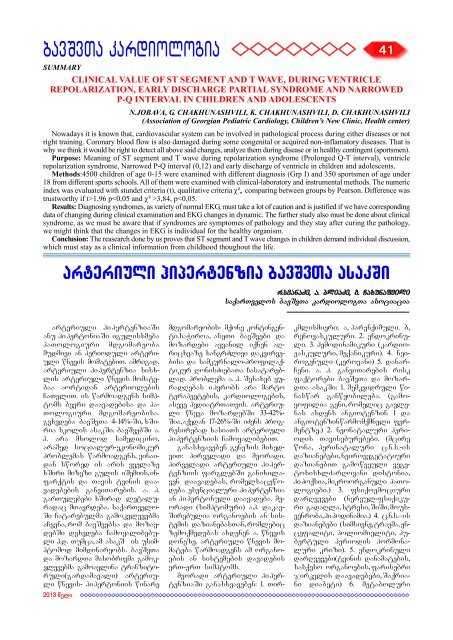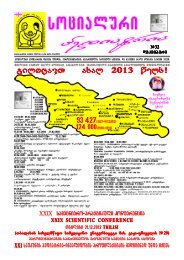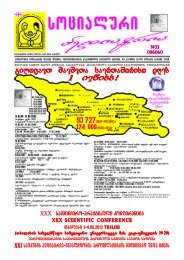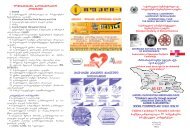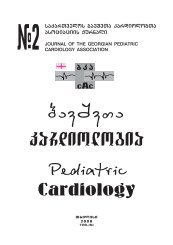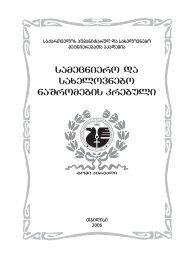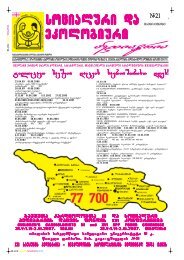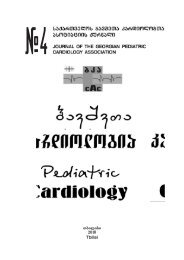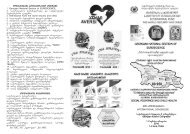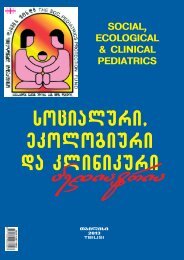You also want an ePaper? Increase the reach of your titles
YUMPU automatically turns print PDFs into web optimized ePapers that Google loves.
,fdidsf rfhlbjkjubf<br />
SUMMARY<br />
CLINICAL VALUE OF ST SEGMENT AND T WAVE, DURING VENTRICLE<br />
REPOLARIZATION, EARLY DISCHARGE PARTIAL SYNDROME AND NARROWED<br />
P-Q INTERVAL IN CHILDREN AND ADOLESCENTS<br />
N.JOBAVA, G. CHAKHUNASHVILI, K. CHAKHUNASHVILI, D. CHAKHUNASHVILI<br />
(Association of Georgian Pediatric Cardiology, Children’s New Clinic, Health center)<br />
Nowadays it is known that, cardiovascular system can be involved in pathological process during either diseases or not<br />
right training. Coronary blood flow is also damaged during some congenital or acquired non-inflamatory diseases. That is<br />
why we think it would be right to detect all above said changes, analyze them during disease or in healthy contingent (sportsmen).<br />
Purpose: Meaning of ST segment and T wave during repolarization syndrome (Prolonged Q-T interval), ventricle<br />
repolarization syndrome, Narrowed P-Q interval (0,12) and early discharge of ventricle in children and adolescents.<br />
Methods:4500 children of age 0-15 were examined with different diagnosis (Grp I) and 350 sportsmen of age under<br />
18 from different sports schools. All of them were examined with clinical-laboratory and instrumental methods. The numeric<br />
index was evaluated with stundet criteria (t), qualitative criteria χ2 , comparing between groups by Pearson. Difference was<br />
trustworthy if t>1,96 p3,84, p


